Duvets vs. Comforters

Last updated September 7, 2023
A duvet is like a large flat pillow inserted into a pillowcase. This versatile linen is a popular bedroom purchase. It comes in a variety of materials, styles and thicknesses. A duvet can keep you cozy in the winter. Or it can keep you comfortable and cool in the summer. It’s surprisingly lightweight, allowing for easy bed making in the mornings.
If you've ever asked, "What is a duvet?", this guide has the answer. Read on to learn the difference between duvets and comforters. You'll learn the best fabric choices for this type of bedding. Plus, you'll get cleaning and care tips to keep it long-lasting.
Table of Contents
Duvet vs. Comforter
Duvet Pros & Cons
Comforter Pros & Cons
What is a Duvet Insert?
Duvet Cover
Duvet Sizes
Duvet vs. Comforter
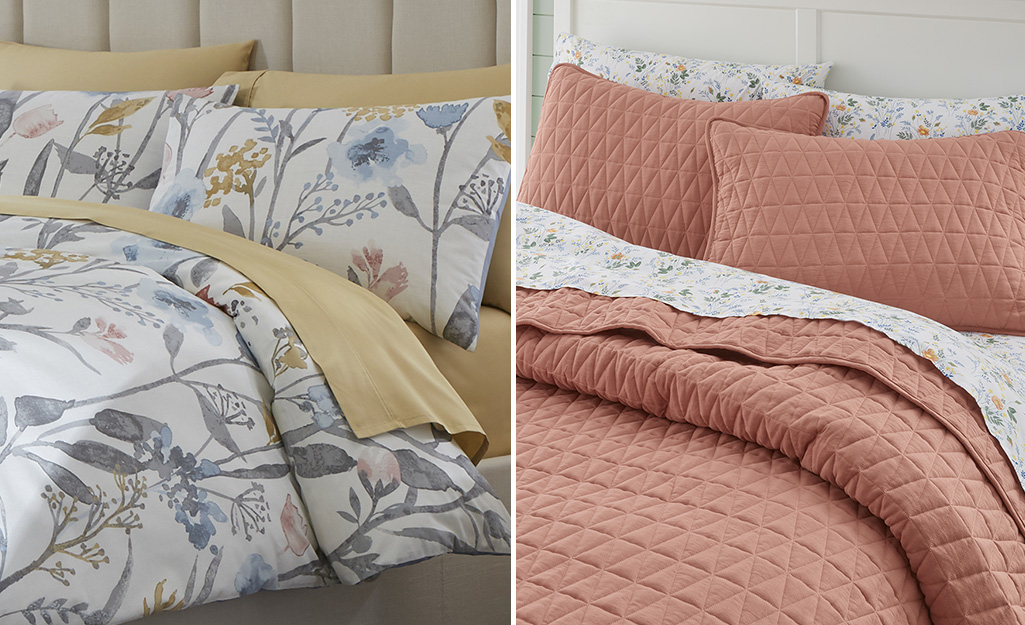
Duvet is a French word that means “down.” Traditionally, companies used goose down feathers to make this type of bedding. Different types of feathers and materials exist now.
While different, comforters and duvets have many benefits in common. Like a comforter, a duvet insert has different material options. Your options are synthetic fibers or natural materials. A duvet can be thick and fluffy or thin and lightweight.
Unlike a comforter, a duvet includes a removable cover. This extra cover protects it from dirt and dust. A properly covered duvet requires less laundering. Many find the care much easier than a comforter.
Despite being similar, there are pros and cons to each.
Duvet Pros & Cons
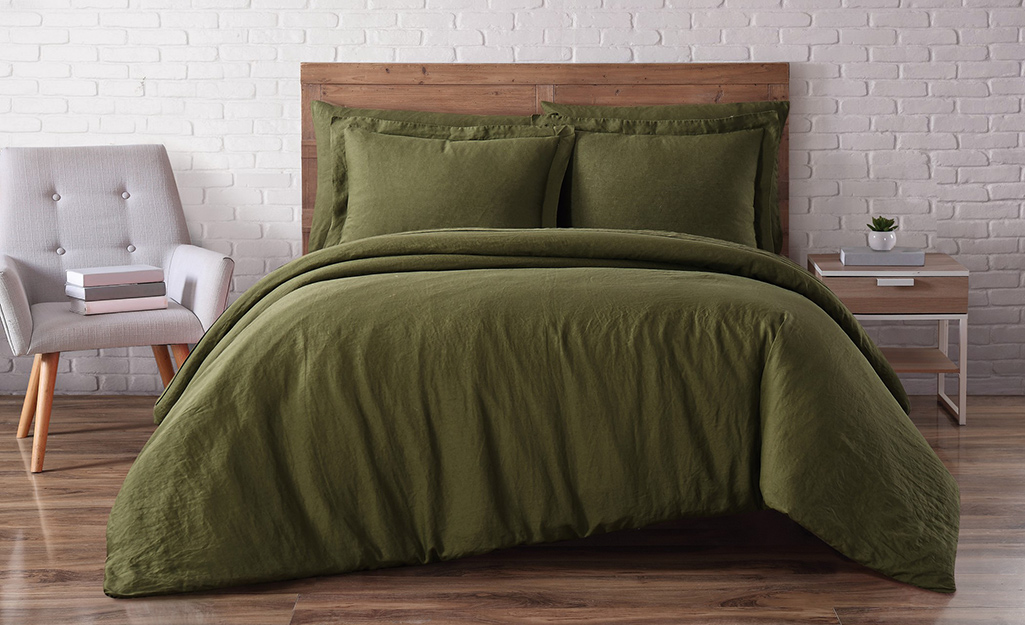
There are pros and cons to keep in mind when considering a duvet.
Duvet pros:
- They're easy to care for. First, remove the duvet cover from the duvet insert. Clean either both or whichever is dirtiest. The cover naturally gets dirtier than the duvet itself. Thus, it makes cleaning simpler.
- You can change out the cover any time you want. Need to match your new bedspread? It's easy to change the cover.
- Duvets are less expensive than a comforter.
Duvet cons:
- A duvet is two pieces of bedding in one. Some may find that difficult to manage.
- Changing a duvet cover may take some time. Think of it like changing a large pillowcase. You may need to enlist a helper.
- Most duvets have ties to keep the duvet in place within the cover. Sometimes the insert may clump underneath and move out of place.
Comforter Pros & Cons
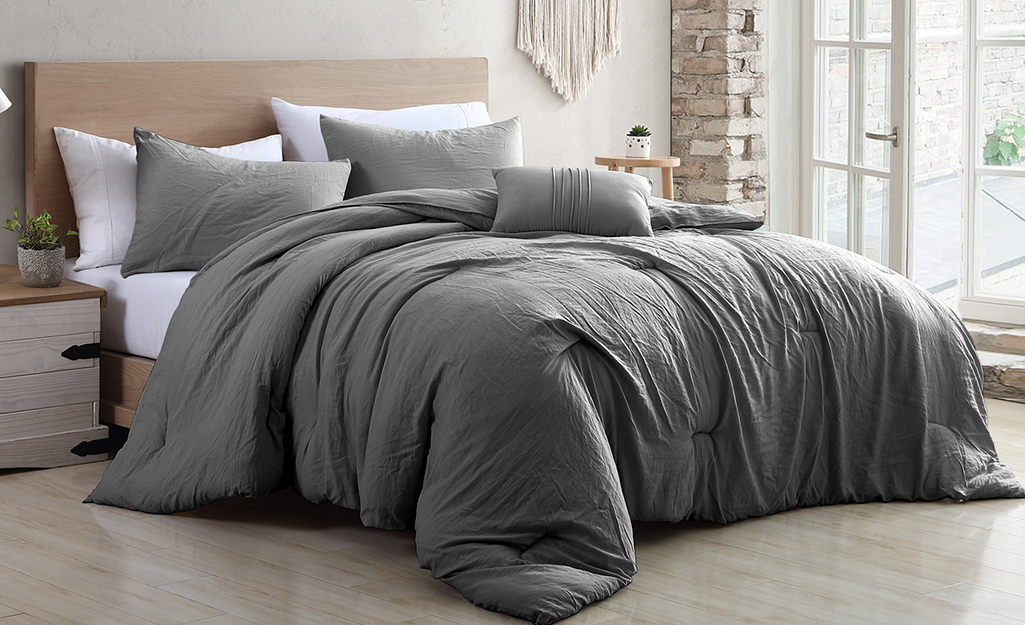
Same as duvets, there are pros and cons with comforters to keep in mind.
Comforter pros:
- It's one piece of bedding which can be more efficient.
- Comforters usually sell as a set. So you'll get a pillow sham with your comforter or more.
- They can come in cute patterns and prints.
Comforter cons:
- If you're one who likes to change your bedding decor often, a comforter may not be for you.
- This bulky piece of bedding will be more difficult to wash.
- Comforters may start to flatten over time the more you use them.
Both comforters and duvets work well in hot or cold seasons. For comforters, look for materials that suit the season. For duvets, make sure you find a duvet insert that fits the season. It should be either heavier for winter or lighter for summer.
What is a Duvet Insert?
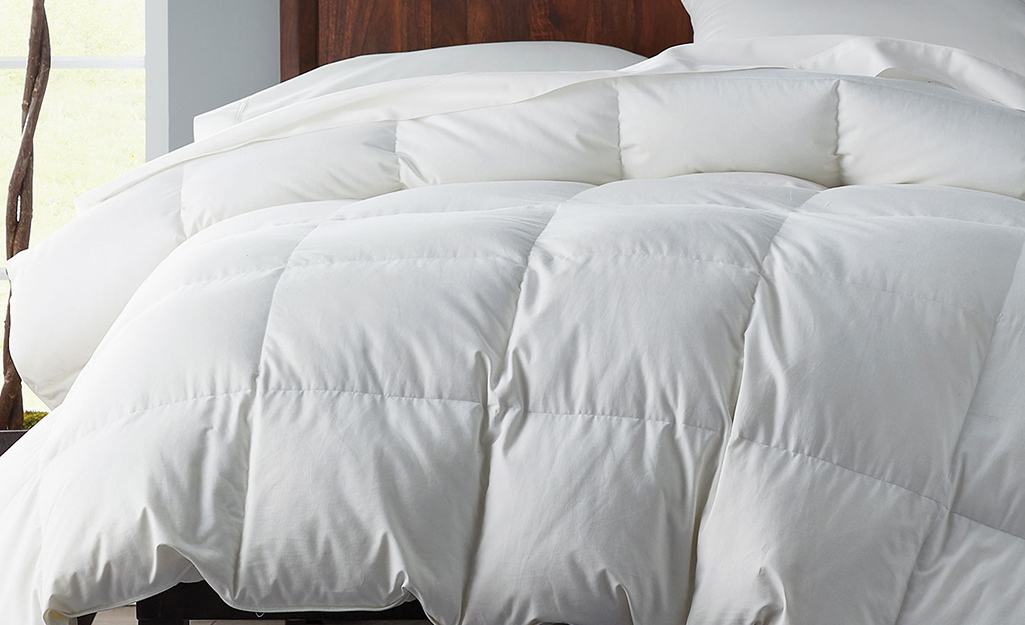
The "pillow" part of the duvet is the insert. Down or a down/feather blend are the most common natural fillers. A 100 percent down fill is a higher investment choice. That's because it's made of fluffy, insulating feathers from duck or goose bellies. Synthetic fillers are more budget-friendly and hypoallergenic. Natural fibers, such as silk or cotton, can vary in cost and comfort.
Down/feathers:
- Insulating warmth
- Good breathability
- Lightweight
- Allergy concerns
- May require professional cleaning
Down alternatives (synthetics or natural):
- Hypoallergenic and irritant-free
- Heavier/less breathability
- May clump or mat
- Easy care
Tip: The amount of down per square inch in a duvet is its fill power. The higher the fill power, the warmer and lighter the duvet. Fluffier down has higher insulating power. It needs less down to provide the same warmth as a down with lower fill power. For a duvet insert that’s comfortable year-round, choose one with a fill power between 400 and 600.
Duvet Cover

Duvet covers have zippers, snaps, buttons or decorative ties. These add-ons keep your duvet in place. Your duvet cover protects your duvet from dirt, stains and dust mites. It's an easy way to change the color, pattern or texture of your bedding. It is similar changing a pillowcase. Some come with matching shams to give your bedroom a completed look.
- Cotton is the most popular choice for a duvet cover. A cotton cover is comfortable, easy to care for and affordable. Choose a thread count that makes you feel the most comfortable.
- Polyester or poly-cotton blends are the easiest to care for. They're also budget-friendly.
- Linen is an elegant, breathable fabric known for its high-end look and feel.
- Silk is a breathable and luxurious option. It's known for its ability to repel dust and provide lightweight warmth.
Tip: Though not necessary, some people like to use duvet covers with comforters. This keeps their comforters from getting dirty.
Duvet Sizes

Duvets come in the same sizes as comforters. Measure your comforter and choose a duvet that's near the same size. For a tighter fit, choose a duvet size one or two inches smaller.
Tip: Replace your duvet every 5 to 10 years. If you notice a worn or torn casing, lumpiness or thin filling, replace it.
Caring For Your Duvet
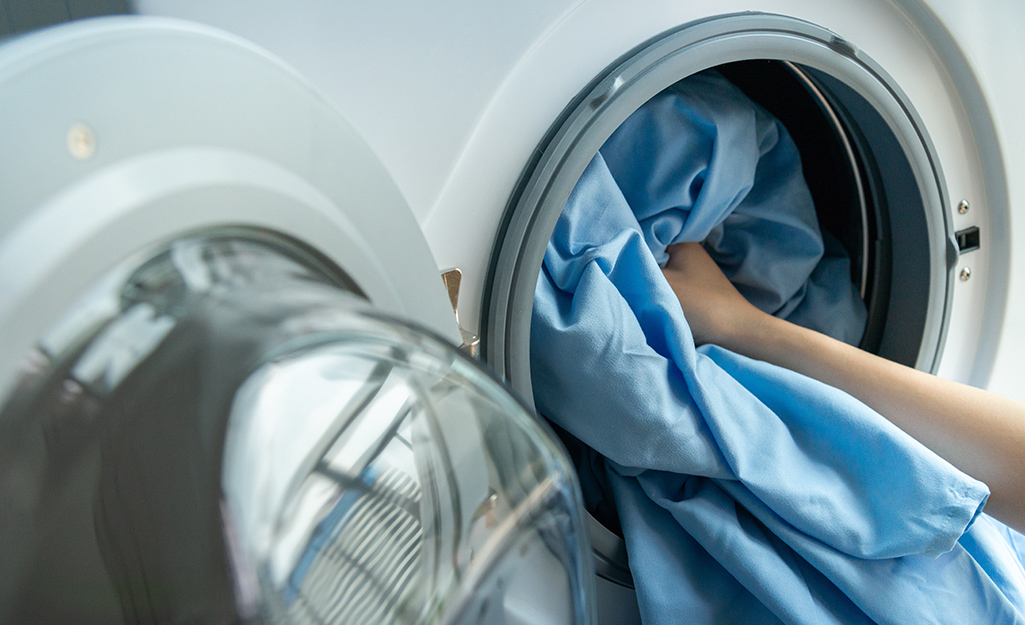
Always check the care label on your duvet or duvet cover first. Each duvet or duvet cover will have specific cleaning instructions.
Refreshing:
- Refresh your duvet every month or so to keep it smelling great.
- Give your duvet a refresh by hanging it outside on a sunny clothesline.
- Place a dry duvet in the dryer and add a dryer sheet.
Washing:
- Dry-clean or machine wash it every 4 to 6 months. Spot treat any stains before washing.
- Use gentle detergent and cold water to prevent shrinking.
- Rinse twice to remove any residue.
- Some residential washers and dryers have the capacity to handle duvet inserts or comforters. Read your machine manuals carefully before deciding to launder this bedding at home.
Tumble Drying:
- Fluff up your duvet by adding dryer balls or tennis balls.
- Watch heat settings. High heats can cause damage to a duvet’s filling.
- A “cool” dryer setting may work for washable down or feather-filled duvets.
- Shake out the duvet at the end of a drying cycle and check for damp spots. Make sure the duvet is completely dry before use. This helps avoid it becoming moldy or mildewed.
- Wash or dry-clean your duvet cover when you wash your pillowcases and sheets.
- Down or feather-filled duvets may be dry-cleaned only. It should rarely be washed, if ever.
Selecting the right type and style of duvet for your bedroom is the first step. Learning how to take care of it dramatically improve its look and feel. Are you ready to update your decor with a duvet? The Home Depot delivers online orders when and where you need them.






































